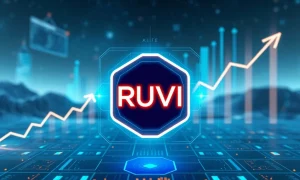Are you striving for growth, yet feel like your efforts aren’t yielding the desired results? Perhaps you’ve invested in advertising, revamped your website, or even expanded your team. However, the leads might not be converting, or new customers simply aren’t staying. Many businesses experience this frustration. The truth is, scaling effectively isn’t just about doing more; it’s about doing things smarter. This article will guide you through strategic approaches to master **customer acquisition**, ensuring every move counts towards sustainable growth.
The Evolving Landscape of Customer Acquisition
The reality today is clear: winning new customers has become increasingly expensive. Ad platforms are saturated, attention spans are fleeting, and every brand competes fiercely for visibility. However, this challenge also presents a significant opportunity. Businesses that truly understand their target audience and speak their language can still make substantial progress. The key shifts from merely ‘getting traffic’ to attracting *relevant traffic*. This means engaging individuals who already show interest in your offerings. Simply throwing money at broad campaigns rarely works now. Instead, successful brands prioritize understanding user intent, timing, and behavior.
Consider the rising **customer acquisition cost** (CAC). This vital metric represents the expense incurred to acquire a new customer. As competition intensifies, so does the CAC. Therefore, a strategic approach to **customer acquisition** becomes paramount. Businesses must meticulously analyze their spending and ensure every dollar contributes to attracting valuable, long-term customers. For example, a targeted pay-per-click (PPC) campaign, managed by experts, ensures clicks translate into genuine interest, rather than wasted impressions.
Building a Robust Digital Foundation for Customer Acquisition
No amount of advertising can compensate for a poor website experience. Your digital foundation, encompassing your homepage, product pages, and even loading speeds, profoundly impacts the user journey. Imagine a potential customer clicking your ad. Do they land on a clean, intuitive page that guides them seamlessly? Or do they encounter a chaotic site that prompts them to bounce immediately? A smart website answers questions, builds trust, and clarifies the next steps. It doesn’t need to be overly fancy, but it must be functional and user-friendly. Your customer’s experience begins the moment they arrive on your site, making this part of the **customer acquisition** journey as crucial as the initial advertisement.
To optimize your digital foundation for effective **customer acquisition**, focus on several key areas:
- Intuitive Navigation: Make it easy for visitors to find information.
- Clear Call-to-Actions (CTAs): Guide users towards desired actions.
- Mobile Responsiveness: Ensure your site performs flawlessly on all devices.
- Fast Loading Times: Prevent frustration and high bounce rates.
- Compelling Content: Provide value and address customer pain points.
These elements collectively enhance user experience, thereby improving conversion rates and ultimately lowering your **customer acquisition cost**.
Precision Targeting: The Power of Smarter Segmentation
Not every individual who encounters your message is ready to make a purchase. Some are merely discovering your brand, while others are comparing various options. A few might be convinced but require a final nudge. This diverse customer journey highlights the importance of segmentation. Treating all traffic identically, such as sending the same message to a curious browser and a hot lead, leads to wasted resources. Instead, you must adjust your communication based on where an individual stands in their buying journey. Perhaps one person needs a free informational download, while another is ready for a product demonstration. Effective segmentation allows you to speak directly to each segment, without shouting into a void. This precision saves money, as you focus your marketing efforts where they will generate the greatest impact on **customer acquisition**.
Smarter segmentation strategies enhance your **customer acquisition** efforts by:
- Identifying Ideal Customers: Pinpointing who benefits most from your offerings.
- Personalizing Messages: Tailoring content to specific needs and interests.
- Optimizing Ad Spend: Directing budget towards high-potential segments.
- Improving Conversion Rates: Delivering relevant offers at the right time.
Moreover, modern Customer Relationship Management (CRM) systems facilitate advanced segmentation, allowing businesses to track interactions and automate personalized follow-ups, further streamlining **customer acquisition** processes.
Leveraging Automation for Efficient Customer Acquisition
Manual processes in today’s fast-paced digital environment often lead to falling behind. Automation is not about replacing your team; rather, it frees them to focus on higher-value tasks. Automated bidding strategies, email sequences, and retargeting campaigns help you stay visible to the right people at the optimal time, without causing burnout. For instance, if someone visits your pricing page multiple times but doesn’t convert, a smart automated system can follow up with a reminder or a targeted offer. This happens without any manual intervention from your side. Automation directly contributes to more efficient **customer acquisition** by ensuring consistent engagement and timely outreach.
Integrating automation into your **customer acquisition** strategy provides several benefits:
- Consistent Follow-Up: Nurture leads automatically through their journey.
- Reduced Manual Work: Free up your team for strategic tasks.
- Timely Engagement: Reach prospects at their peak interest.
- Scalability: Handle a larger volume of leads without proportional cost increases.
From marketing automation platforms to AI-powered chatbots, these tools are indispensable for modern **customer acquisition** and significantly impact your overall **customer acquisition cost**.
Data-Driven Decisions: Measuring What Truly Matters for Customer Acquisition
Impressions and clicks might look good on a report, but they mean little if they don’t lead to conversions. A high click-through rate does not always equate to success. Many campaigns garner significant attention but result in minimal action. This indicates noise, not a win. Instead, shift your focus to metrics that truly reflect business growth. Consider your **cost-per-acquisition (CPA)**, which measures the cost to gain each new customer. Equally important is the **Customer Lifetime Value (CLTV)**, representing the total revenue a customer is expected to generate throughout their relationship with your business. Tracking these key numbers provides clarity for your strategy. You will precisely identify which aspects are performing well, which ones need adjustment, and where to optimize. Guessing is an expensive approach; data-driven growth is not. Robust analytics empower you to refine your **customer acquisition** efforts continuously.
Key metrics for optimizing **customer acquisition** include:
- Cost Per Acquisition (CPA): Understand the efficiency of your spending.
- Customer Lifetime Value (CLTV): Assess the long-term profitability of customers.
- Conversion Rate: Measure the percentage of visitors who complete a desired action.
- Return on Investment (ROI): Evaluate the profitability of your marketing campaigns.
- Attribution Models: Understand which touchpoints contribute most to conversions.
Utilizing tools like Google Analytics, CRM dashboards, and dedicated marketing analytics platforms enables businesses to make informed decisions and optimize their **customer acquisition** funnel effectively.
The Role of Specialized Partnerships in Enhancing Customer Acquisition
While internal teams are crucial, partnering with specialized agencies can significantly amplify your **customer acquisition** efforts. For instance, a dedicated PPC company possesses the expertise to manage complex ad campaigns, optimize bidding strategies, and conduct granular keyword research. This ensures your advertising budget is spent efficiently, driving highly relevant traffic to your site. Similarly, an SEO agency can improve your organic search visibility, attracting customers who are actively searching for solutions you offer. Content marketing firms can create valuable content that nurtures leads and builds authority, further aiding **customer acquisition**.
These partnerships bring specialized knowledge and resources, often leading to better outcomes than trying to manage everything in-house. They provide:
- Expertise: Access to specialists in specific marketing channels.
- Efficiency: Faster implementation and optimization of campaigns.
- Cost-Effectiveness: Potentially lower overall **customer acquisition cost** due to optimized strategies.
- Scalability: Ability to expand marketing efforts without increasing internal headcount.
Choosing the right partners is a strategic decision that can dramatically improve your **customer acquisition** pipeline and overall business growth.
Cultivating Customer Loyalty: Beyond Initial Acquisition
While acquiring new customers is vital, retaining existing ones is equally, if not more, important for sustainable growth. A loyal customer base significantly reduces the ongoing need for intensive new **customer acquisition** efforts. Furthermore, satisfied customers often become powerful advocates for your brand, generating valuable word-of-mouth referrals. This organic growth channel effectively lowers your **customer acquisition cost** over time. Therefore, your strategy should extend beyond the initial sale to encompass post-acquisition engagement and relationship building.
Strategies to foster customer loyalty include:
- Exceptional Customer Service: Resolve issues promptly and courteously.
- Post-Purchase Engagement: Follow up with useful content or offers.
- Loyalty Programs: Reward repeat purchases and long-term engagement.
- Feedback Mechanisms: Actively seek and respond to customer input.
- Community Building: Create a sense of belonging among your customers.
Investing in customer loyalty directly impacts your **Customer Lifetime Value (CLTV)**, creating a virtuous cycle where satisfied customers drive further growth, reducing the burden on new **customer acquisition** and improving overall profitability.
Conclusion
To achieve sustainable growth, businesses do not need to do more; they need to do better. Falling into the trap of merely chasing traffic and hoping for the best is no longer a viable strategy. Modern growth doesn’t work that way. It’s not just about attracting people to your site; it’s about effectively guiding them once they arrive. This requires intention, a clear strategy, and a system that moves individuals seamlessly from initial interest to decisive action. Consequently, building a high-converting sales funnel matters more than ever. It serves as the crucial link that connects and strengthens all your **customer acquisition** efforts, paving the way for smarter, more predictable business expansion.
Frequently Asked Questions (FAQs) About Customer Acquisition
Q1: What is customer acquisition, and why is it important for businesses?
Customer acquisition refers to the process of gaining new customers for a business. It is crucial because new customers drive revenue growth, expand market share, and ensure the long-term viability and success of a company. Without effective customer acquisition, businesses struggle to scale and remain competitive.
Q2: How can businesses reduce their customer acquisition cost (CAC)?
Businesses can reduce CAC by optimizing their marketing channels, improving conversion rates on their website, targeting specific audiences more precisely through segmentation, leveraging automation for efficiency, and focusing on retaining existing customers who require less acquisition effort. Data-driven analysis helps identify and eliminate inefficient spending.
Q3: What role does a digital foundation play in customer acquisition?
A strong digital foundation, including a well-designed, user-friendly, and fast-loading website, is fundamental for customer acquisition. It ensures that once potential customers arrive via ads or organic search, they have a positive experience, find relevant information easily, and are guided towards conversion, thus maximizing the return on initial acquisition efforts.
Q4: How does automation impact customer acquisition strategies?
Automation streamlines and enhances customer acquisition by enabling consistent follow-ups, personalized communication, and efficient lead nurturing. Automated systems can manage email campaigns, retargeting ads, and bidding strategies, ensuring timely engagement with prospects without manual oversight, leading to more efficient and scalable acquisition processes.
Q5: What are the most important metrics to track for effective customer acquisition?
Key metrics for effective customer acquisition include Cost Per Acquisition (CPA), Customer Lifetime Value (CLTV), conversion rates, and Return on Investment (ROI). Tracking these metrics provides insights into the efficiency and profitability of your acquisition campaigns, allowing for continuous optimization and strategic decision-making.
Q6: Why is customer segmentation crucial for successful customer acquisition?
Customer segmentation is crucial because it allows businesses to tailor their marketing messages and offers to specific groups of people based on their needs, behaviors, or demographics. This personalized approach increases relevance, improves engagement, and significantly boosts conversion rates, making customer acquisition efforts more effective and cost-efficient.
























